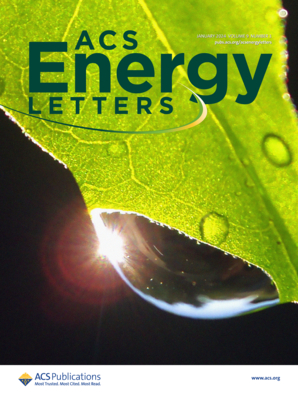Surface Configuration Enables PbSe Quantum Dot Solar Cells with Efficiency beyond 12%
IF 18.2
1区 材料科学
Q1 CHEMISTRY, PHYSICAL
引用次数: 0
Abstract
Lead selenide (PbSe) quantum dots (QDs) are promising materials for optoelectronic devices owing to their strong confinement and high multiple exciton generation. Nevertheless, their full potential remains unrealized, hampered by the challenges of complex synthesis and insufficient passivation. Here, we have devised an optimized surface configuration strategy based on a directly synthesized semiconductive QD ink system. By integrating tailored passivation through a bifunctional molecule, we significantly improved both the optoelectronic properties and the colloidal stability of the QD inks. Consequently, the photovoltaic devices attained a power conversion efficiency (PCE) of 12.07%, marking the highest reported value among all PbSe QD solar cells. Additionally, the QD inks exhibit colloidal stability for over two months, demonstrating outstanding long-term performance. These results emphasize the efficacy of this method in producing high-performance, enduring PbSe QDs for optoelectronic applications.

表面结构使PbSe量子点太阳能电池的效率超过12%
硒化铅(PbSe)量子点(QDs)具有很强的约束性和很高的多重激子发生率,是一种很有前途的光电器件材料。然而,复杂的合成和钝化不足等难题阻碍了它们潜力的充分发挥。在此,我们设计了一种基于直接合成的半导体 QD 墨水系统的优化表面配置策略。通过整合双功能分子的定制钝化,我们显著改善了 QD 墨水的光电特性和胶体稳定性。因此,光伏器件的功率转换效率(PCE)达到了 12.07%,在所有 PbSe QD 太阳能电池中达到了最高值。此外,QD 墨水的胶体稳定性超过两个月,显示出卓越的长期性能。这些结果凸显了这种方法在生产用于光电应用的高性能、持久性 PbSe QD 方面的功效。
本文章由计算机程序翻译,如有差异,请以英文原文为准。
求助全文
约1分钟内获得全文
求助全文
来源期刊

ACS Energy Letters
Energy-Renewable Energy, Sustainability and the Environment
CiteScore
31.20
自引率
5.00%
发文量
469
审稿时长
1 months
期刊介绍:
ACS Energy Letters is a monthly journal that publishes papers reporting new scientific advances in energy research. The journal focuses on topics that are of interest to scientists working in the fundamental and applied sciences. Rapid publication is a central criterion for acceptance, and the journal is known for its quick publication times, with an average of 4-6 weeks from submission to web publication in As Soon As Publishable format.
ACS Energy Letters is ranked as the number one journal in the Web of Science Electrochemistry category. It also ranks within the top 10 journals for Physical Chemistry, Energy & Fuels, and Nanoscience & Nanotechnology.
The journal offers several types of articles, including Letters, Energy Express, Perspectives, Reviews, Editorials, Viewpoints and Energy Focus. Additionally, authors have the option to submit videos that summarize or support the information presented in a Perspective or Review article, which can be highlighted on the journal's website. ACS Energy Letters is abstracted and indexed in Chemical Abstracts Service/SciFinder, EBSCO-summon, PubMed, Web of Science, Scopus and Portico.
 求助内容:
求助内容: 应助结果提醒方式:
应助结果提醒方式:


